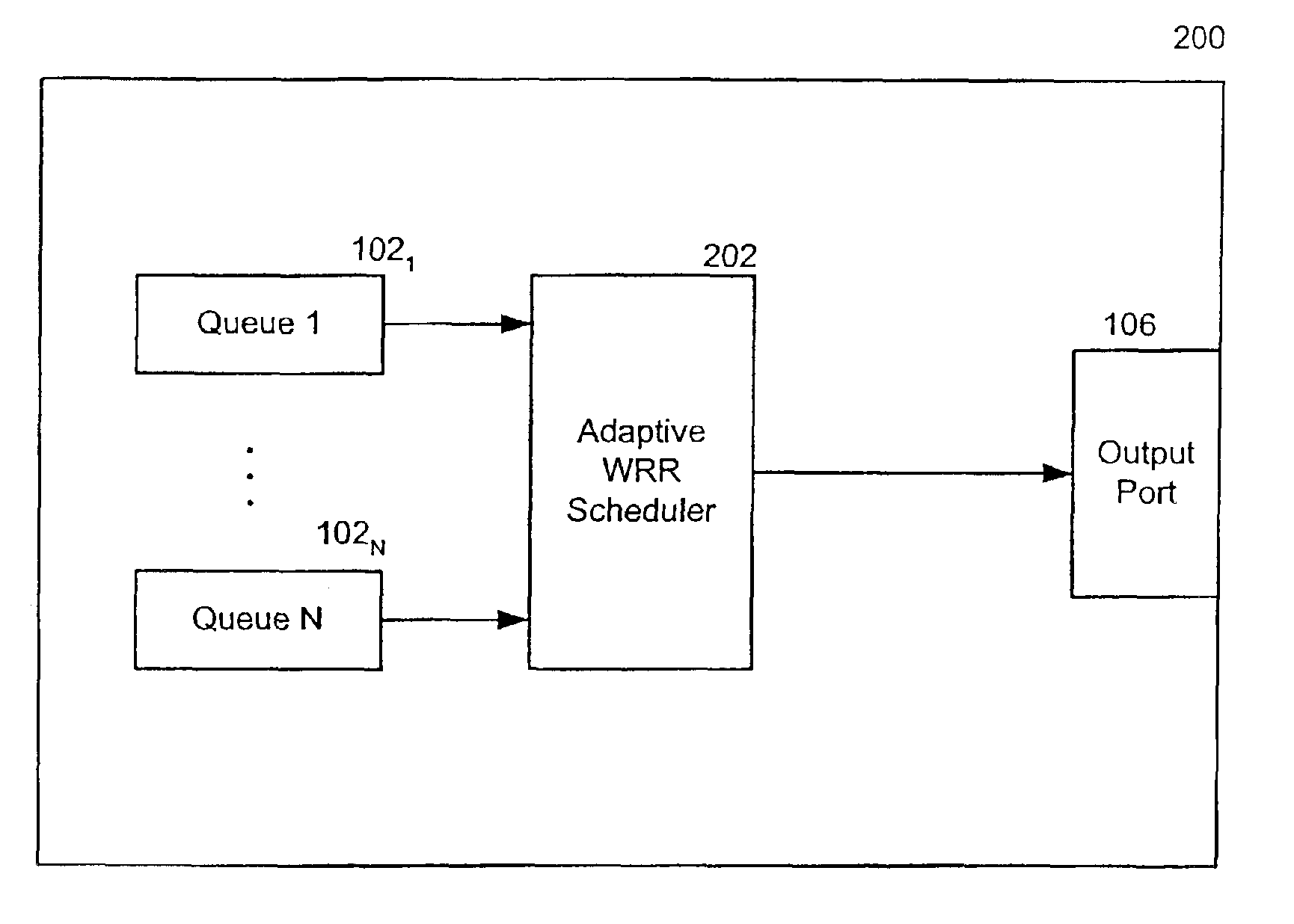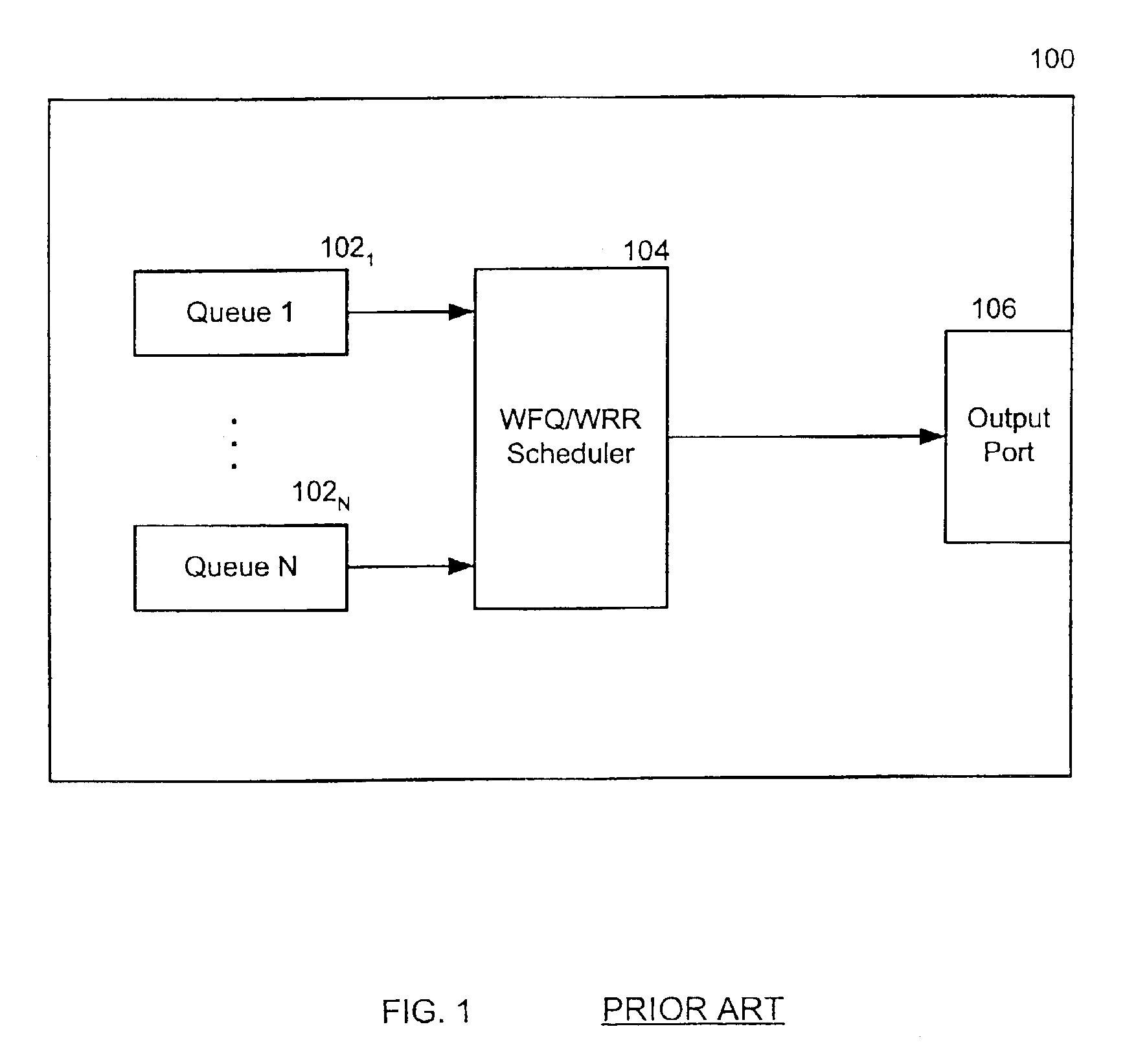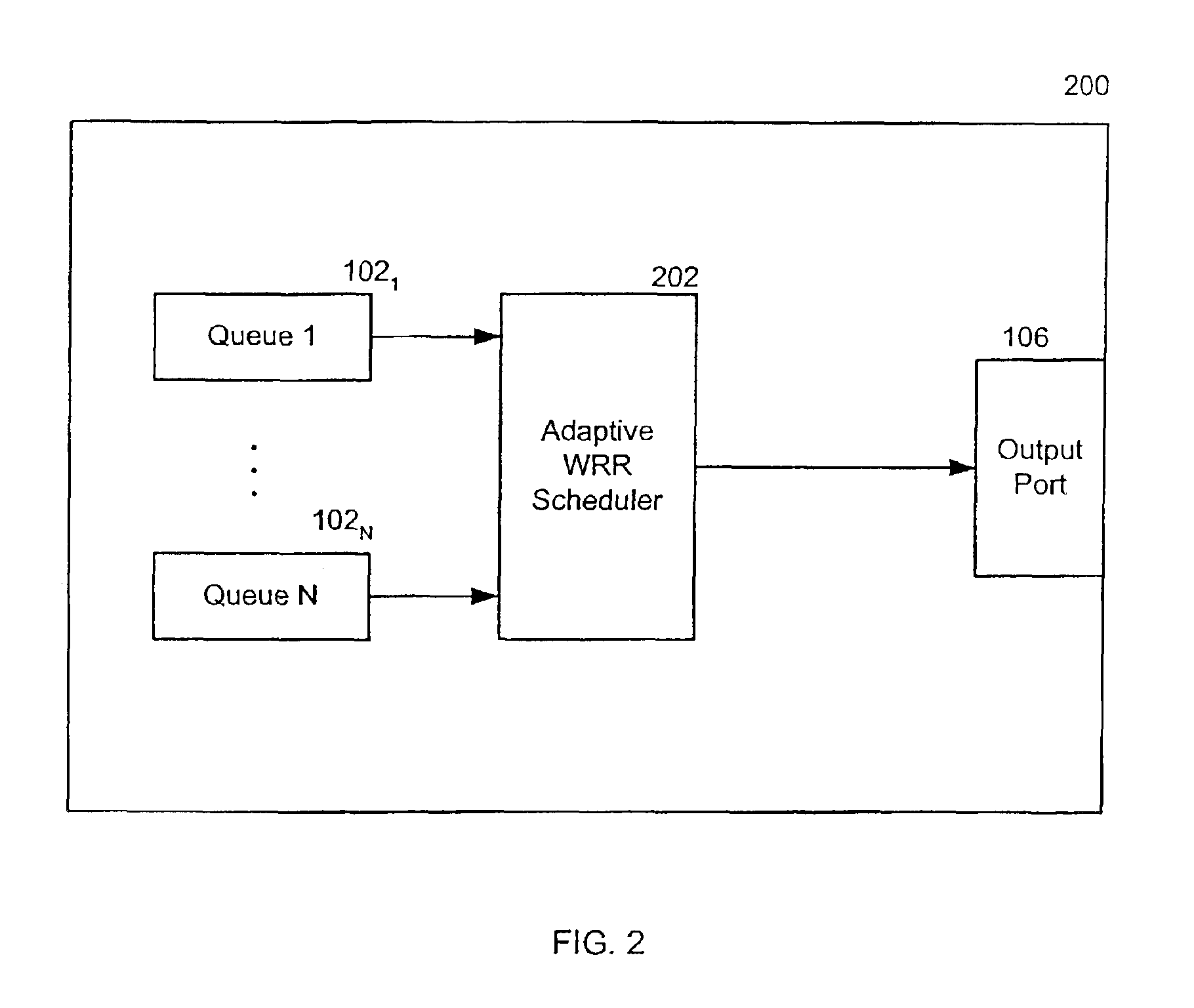Servicing output queues dynamically according to bandwidth allocation in a frame environment
a dynamic, frame environment technology, applied in the field of communication networks, can solve the problems of wfq scheduling, incorrect bandwidth allocation, complicated scheduling of data transmission opportunities in a frame-based communication network, etc., and achieve the effect of reducing the number of bandwidth segments of the queu
- Summary
- Abstract
- Description
- Claims
- Application Information
AI Technical Summary
Benefits of technology
Problems solved by technology
Method used
Image
Examples
Embodiment Construction
[0026]As discussed above, a need has remained for a scheduling discipline that is easy to implement in a frame-based communication network and is capable of dynamically reallocating any unused bandwidth from one logical communication channel to the other logical communication channels. The present invention utilizes a novel adaptive WRR scheduling discipline that schedules variable-length frame transmissions from a plurality of output queues having different transmission priorities by first allocating, for each queue, a number of bandwidth segments for a bandwidth cycle and a number of transmission opportunities for a round robin cycle, and then processing the queues consecutively in a round-robin fashion, beginning with a highest priority queue, until none of the queues has any bandwidth remaining. More specifically, during each iteration of a round robin cycle, a queue is permitted to transmit a frame if the queue has at least one remaining transmission opportunity, the queue has ...
PUM
 Login to View More
Login to View More Abstract
Description
Claims
Application Information
 Login to View More
Login to View More - R&D
- Intellectual Property
- Life Sciences
- Materials
- Tech Scout
- Unparalleled Data Quality
- Higher Quality Content
- 60% Fewer Hallucinations
Browse by: Latest US Patents, China's latest patents, Technical Efficacy Thesaurus, Application Domain, Technology Topic, Popular Technical Reports.
© 2025 PatSnap. All rights reserved.Legal|Privacy policy|Modern Slavery Act Transparency Statement|Sitemap|About US| Contact US: help@patsnap.com



